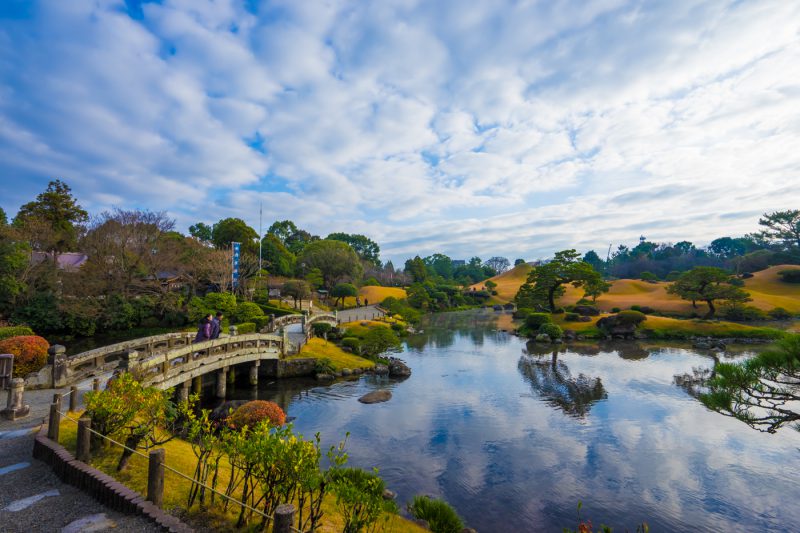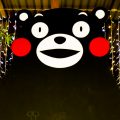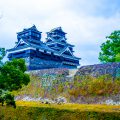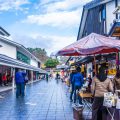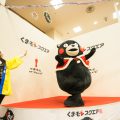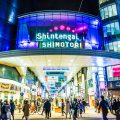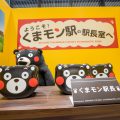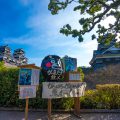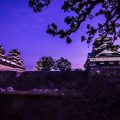[Introduction]
I traveled to Kumamoto using “Kyushu Fukko Wari” (Kyushu Reconstruction Discount Tickets). Since I was impressed with Kumamon (the local mascot character of Kumamoto Prefecture) at Yuru-chara Grand Prix 2016, I decided to visit Kumamoto to see how reconstruction has been moving forward after the strong earthquake. In this article, I will write about Suizenji Jojuen Garden as part of Day 3.
[Visit Places (series of articles)]
* Day 1: Departure for Kumamoto
* Day 2: Kumamoto Castle
* Day 2: Josaien
* Day 2: Kumamon Square
* Day 2: Kumamoto Night View
* Day 3: Kumamoto Suizenji [This article]
* Day 3: Kumamoto Station
* Day 3: Kumamoto Castle (Revisit)
* Day 3: Kumamoto Castle (Evening View)
[Travel Date]
2016.12.22 – 24
[Main Part]
It was the 3rd day of my Kumamoto trip.
New ultra low-floor tram “COCORO”
To begin with, I took a new ultra low-floor tram “COCORO”.
“COCORO” has started its operation since October 2014 as part of the 90th anniversary of the opening of Kumamoto City Transportation. The train was designed by Eiji Mitooka, a famous train designer.
Since I planned to take city tram several times today, I bought “Kumamoto City Tram 1 Day Pass”.
I arrived at “Kami-Kumamoto”, the last station.
Since “Kami-Kumamoto” is a terminal station, there was a train base.
Before the departure to the next destination, I took the interior of “COCORO”.
Cockpit of the train.
I took “COCORO” again and moved to “Suizenji Jojuen Garden”.
Suizenji Jojuen Garden
I reached “Suizenji Jojuen Garden”.
Suizenji Jojuen Garden is a Momoyama style garden. The garden starated to be constructed in 1636 and took about 80 years to complete. Suizenji Jojuen Garden has been designated a national beauty spot and historical place since 1929.
I entered into the garden.
What attracted visitors in the garden was a big pond, which was about 10,000 square meter. Suizenji Jojuen Garden was a circuit style garden, so I went around the pond.
Personally, I thought this scenery with pond and stone bridge was the most photogenic spot in the garden.
View from the stone bridge.
With a couple.
There was Izumi shrine in the garden.
I continued to stroll around the pond.
Inari Shrine.
This spot was called “Mt. Fuji”.
Statues of the Hosokawa family, the founder of the garden.
A house on the left was called “Kokindenju Room”.
This was Noh theater.
Now I was about to reach the goal.
The last photo in the garden was takes at “Kokindenju Room” and a tea house.
Shopping street near Suizenji Jojuen Garden
After I left Suizenji Jojuen Garden, I walked around the shopping street near the garden.
I bought Ikinari Dango (steamed buns with bean jam and sweet potato filling), which was one of the famous local sweets in Kumamoto.
Then, I moved to around Kumamoto station and I will write about it in the next article.
[Closing]
That’s it for the article about Suizenji Jojuen Garden as part of Day 3. Suizenji Jojuen Garden is a little bit far from the downtown area of Kumamoto, but I believe it was worth visiting 🙂
In the next article, I will write about Kumamoto station.
[Map]
[Related Link]
Kumamoto Nagomi Tourism Site
Visit Kumamoto – Kumamoto City Official Tourist Guide

